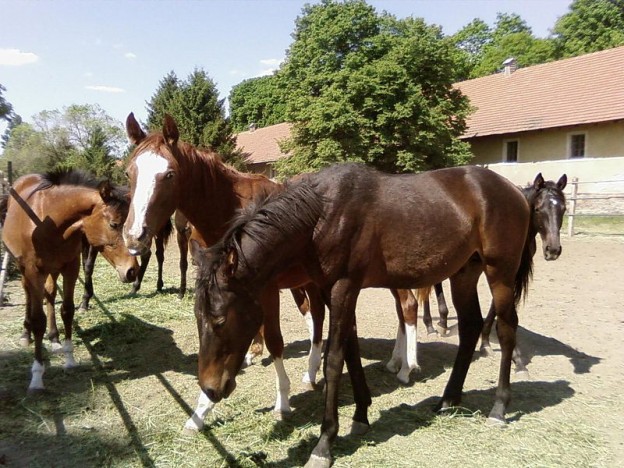The New York State Department of Agriculture and Markets has confirmed a case of Equine Herpes Virus (EHV-1) at Belmont Park. A 3-year old male was sent to the Cornell Ruffian Equine Hospital after developing clinical signs including fever and mild respiratory signs, according to the Equine Disease Communication Center.

Public domain image/Dusan Bicanski
The horse has not shown any neurologic signs and is currently at the Ruffian Center for monitoring. Barn 44 at Belmont Park, where the horse was originally house prior to being transported, has been placed under a precautionary quarantine.
EHV-1 infection in horses can cause respiratory disease, abortion in mares, neonatal foal death and neurological disease. The neurological form of the disease is known as Equine Herpes Myeloencephalopathy (EHM) and may be caused by damage to blood vessels of the brain and spinal cord associated with EHV-1 infection. EHM is most often due to the neuropathogenic strain of EHV-1, but may occasionally be caused by the non-neuropathogenic strain of the virus.
EHV-1 is easily spread and typically has an incubation period between 2-10 days. Respiratory shedding of the virus generally occurs for 7-10 days, but may persist longer in infected horses. For this reason, a twenty-one day isolation period of confirmed positive EHM cases is recommended along with stringent biosecurity protocols. Similar to herpes viruses in other species, the latent form of EHV-1 can reactivate at a later date, but generally with a low viral load posing a low risk of infecting other horses. Humans are not at risk of contracting the virus, however humans can act as an indirect mode of transmission.
Related:
- CDC: Vaccine effectiveness against the H3 viruses will probably be in the 30 percent range
- South Korea: Citrobacter freundii linked to deaths of infants at Seoul hospital
- Rabies survivor: Milwaukee protocol saves Brazilian teen
- H7N9 avian flu fatality reported in Xinjiang
- Pets: Raw meat diets pose a risk to both animal and human health
- Australia: Widespread hepatitis A local transmission among Victoria MSM reported


